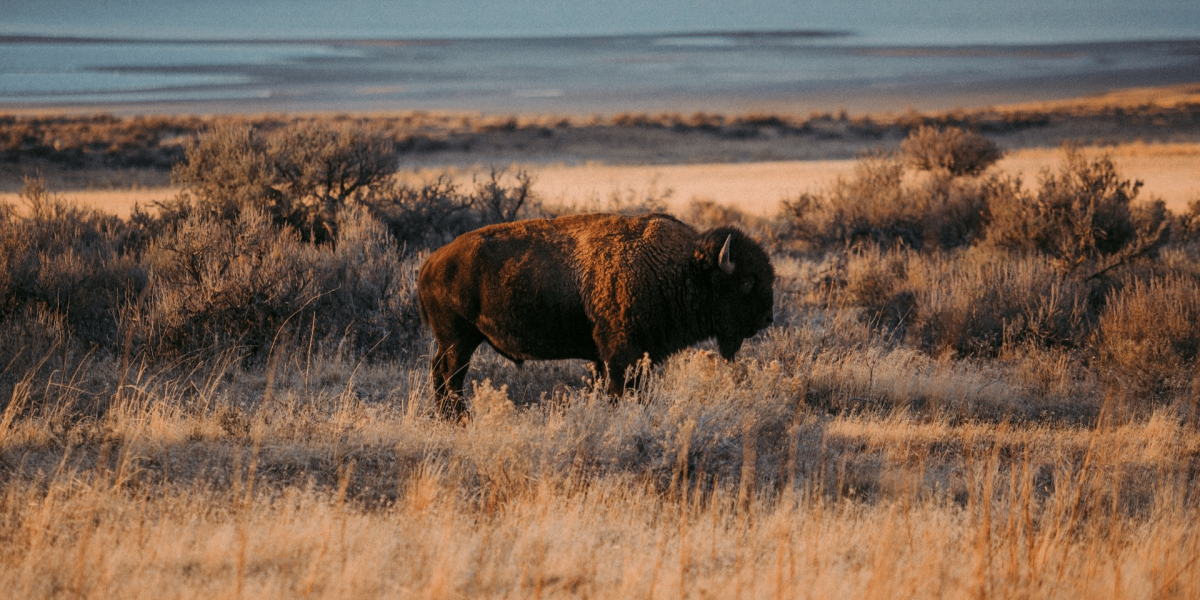Once a thunderous presence roaming the North American plains in the millions, bison were nearly driven to extinction by the late 19th century. A brutal combination of overhunting, habitat loss, and disease decimated their populations.
Thankfully, conservation efforts have brought these majestic creatures back from the brink. But are bison truly out of the woods? The answer, unfortunately, is a bit more complex.
From the Brink Back to the Grasslands: A Conservation Success Story (with Nuance)
The story of the American bison is a testament to the power of conservation. Through dedicated efforts by government agencies, conservation organizations, and indigenous tribes, bison populations have rebounded significantly. As a report by the National Wildlife Federation highlights, “Bison numbers have increased from a low of around 300 animals in the late 1800s to an estimated 500,000 today.” [[invalid URL removed]]
However, celebrating this statistic requires a bit of nuance. Many of these bison are managed in private herds or on fenced-in refuges. These populations serve a purpose, providing a source of meat and income for ranchers and contributing to the overall bison population. But they don’t represent true wild bison populations, roaming free across vast landscapes and playing a vital role in the ecosystem. True wild bison populations, estimated to be around 15,000, are still a shadow of their former glory.
Beyond the Numbers: Challenges to a Full Recovery
The road to true bison recovery is riddled with challenges. One major obstacle is habitat loss. Their native Great Plains ecosystem has been significantly altered by agriculture and development. Vast swathes of native grasslands have been converted to cropland, leaving bison populations confined to fragmented patches of land. This restricts their ability to roam freely and find essential resources for grazing, breeding, and calving. Imagine a human population confined to tiny, isolated pockets of land – it’s simply not conducive to long-term health and survival.
Genetic Diversity: A Hidden Threat
Another significant threat is the lack of genetic diversity. The near-extinction event caused a drastic bottleneck, leaving bison populations with limited genetic variation. This lack of diversity makes them more susceptible to disease and reduces their adaptability to a changing environment.
An outbreak of a new disease, for example, could have a devastating impact on a population with limited genetic diversity. As an article on bison restoration points out, “Low genetic diversity can lead to inbreeding depression, where offspring are more likely to inherit harmful traits.”
Restoring the Balance: The Ecological Importance of Bison
Bison aren’t just majestic creatures; they’re ecological engineers, playing a vital role in the health of the Great Plains ecosystem. Their grazing habits help maintain healthy grasslands, preventing the encroachment of woody plants and promoting a diversity of grasses and wildflowers.
These diverse grasslands, in turn, provide habitat for a wide variety of other species, from insects and birds to small mammals and larger predators. Their movements also help disperse seeds, promoting plant growth and biodiversity. In short, the return of bison is not just about saving a single species; it’s about restoring balance to a vital ecosystem.
The Future of the Bison: A Collaborative Effort
The future of the bison hinges on continued conservation efforts on multiple fronts. Protecting and expanding their habitat is crucial. This could involve working with private landowners to establish conservation easements or creating corridors that allow bison to move between fragmented areas. Promoting genetic diversity through selective breeding programs and the reintroduction of bison from disease-free populations is another important step.
Collaboration between government agencies, tribes, and private landowners is key. Indigenous tribes have a deep cultural connection to bison and possess valuable knowledge about their traditional management practices. Incorporating this knowledge into conservation efforts can be incredibly beneficial. Public education also plays a vital role. Raising awareness about the importance of bison and the threats they face can inspire public support for conservation initiatives. By understanding the critical role bison play in the ecosystem, we can become stronger advocates for their continued return to the Great Plains.
A Symbol of Resilience: The Bison’s Legacy Endures
The story of the American bison is a powerful reminder of human impact on the natural world, but it’s also a story of hope and resilience. Through dedicated conservation efforts, these magnificent creatures have been brought back from the brink. But the journey is not over. By addressing the remaining challenges and working together, we can ensure that these iconic animals continue to roam the plains for generations to come. The thunder of hooves isn’t just a sound of the past; it’s a hopeful echo reminding us of the power of collective action and the enduring spirit of wild America.
Imagine vast herds of bison once again roaming the Great Plains, their powerful presence a testament to our commitment to restoring ecological balance and preserving the natural heritage of this continent. The bison’s comeback story is far from over, but with continued dedication and collaboration, we can ensure that future generations can witness the awe-inspiring beauty and ecological significance of these magnificent creatures.
So, the next time you see a bison, whether in a national park, a wildlife refuge, or even on a well-managed ranch, take a moment to appreciate their resilience and the ongoing efforts to secure their future. Their thunderous return is a symbol of hope, a testament to the enduring power of conservation, and a reminder that even in the face of immense challenges, positive change is possible.






